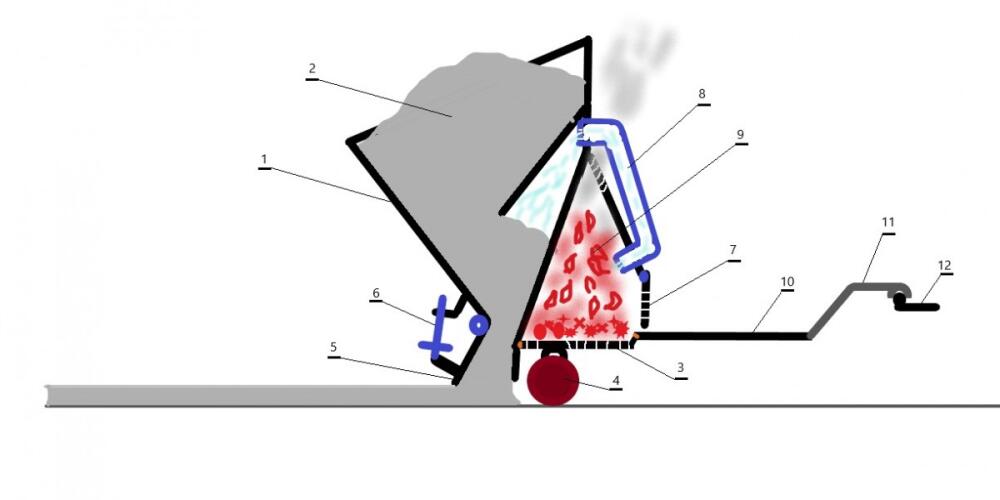
In today's municipal waste, there is often more than 30 percent plastic. There are several examples of how very solid plastic elements can be obtained from plastic waste mixed with small stones and sand and heated.
According to ecology experts, the problem with municipal waste was waste that rots and creates unpleasant odors. However, this is only a problem when the waste comes into contact with moisture. If bio waste is heated to 100 degrees, it becomes completely dry, and if it is heated to the temperature at which plastic melts, then that plastic enters the pores of the bio waste. This means that organic waste becomes inert waste and can no longer rot. Thanks to this, mixed municipal waste can be used as material for making hard roads, harder than asphalt roads.
To this end, the waste must first be ground well into small fractions. After that, it needs to be washed in order to separate the soluble part of the waste from it. Such washed waste must be dried well by exposure to the sun and air in greenhouses by spreading it on the ground in a thin layer. Well-dried ground waste can be stored for a long time in dry warehouses.
A device for placing dry ground mixed municipal waste on the road could be made in a very simple way, and is shown in cross-section in the picture above.
The waste (2) is inserted into a large metal basket (1) which is mounted on wheels (4). The metal basket (1) has a front and a back plate, and is widened at the top, narrowed at the bottom, and inside it has an additional plate that separates the waste (2) from the front plate of the basket (1). In front of the front panel of the metal basket (1) there is a firebox (9) in which the fire burns. The firebox (9) has a firebox door (7) at the bottom, through which fuel such as wood or coal is inserted. At the bottom of the firebox (7) there is a grid plate (3) on which solid fuel burns. When the fuel is ignited, the temperature heats up the finely ground dry mixed municipal waste (2) that is in the metal basket (1). The smoke created by combustion leaves the firebox (7) through small openings located near the top of the firebox (7). When waste (2) is heated to 100 degrees, water completely evaporates from it. With further heating, oils, fats, paints, paraffins and part of the plastic evaporate. All these vapors and gases are collected at the top of the metal basket (1), and are led through gas pipes (8) into the combustion chamber (9) where they burn and thus additionally heat thecombustion chamber (9) and the metal basket (1). In front of the firebox (9) at its bottom, there is a solid plate (10) on which stands a worker who puts fuel into the firebox (9). On the front side of this solid plate (10) there is a connecting rod (11) through which the entire device is connected to the towing hook (12) which is on a towing vehicle. The towing vehicle can be a car, tractor or truck.
When placing waste (2) on the road, the heated waste slides down and exits the metal bin (1) at the bottom. By pulling the metal basket (1) forward, part of the heated waste remains on the ground, whereupon it is leveled by a solid metal leveler (5), whose lower part is placed a few centimeters above the ground on which the wheels (4) move. At the same time, part of the waste remains in a layer under the ruler (5), the thickness of which can be regulated by raising or lowering the ruler (5). Raising and lowering the ruler (5) is done with two metal screws (6), by turning which the ruler (5) is lowered or raised. One screw (6) is located on the left and the other on the right side of the ruler (5).
The hot waste (2) that has been laid on the road in this way needs to be leveled and compacted with a roller in order to squeeze the air out of the mass. By cooling the waste mass, a very solid and hard substrate is obtained, which consists of plastic, glass, stones and plastic-impregnated bio waste. The plastic in the substrate connects the entire layer of mass, which is stronger in tension than concrete, and harder in compression than asphalt.
Tags
Featured articles